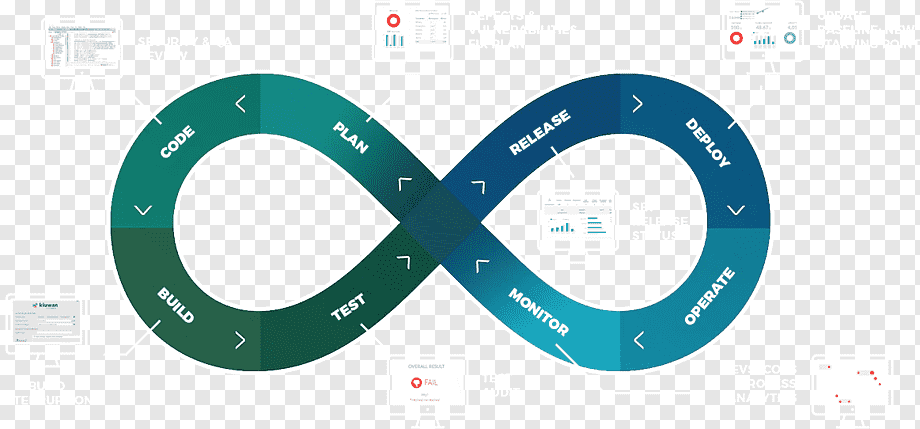DevOps Unleashed: The Modern Solution for Seamless Development and Operations
 Pooja Manellore
Pooja Manellore
DevOps is a modern methodology that bridges the gap between software development and IT operations. By integrating and automating development, testing, and deployment processes, DevOps enables faster, more accurate, and collaborative workflows. This approach focuses on delivering high-quality software swiftly and efficiently, minimizing errors, and maximizing team synergy. Here’s how DevOps has redefined software development:
The Journey to DevOps
Traditional Models and Their Limitations
Waterfall Model
The Waterfall model is a step-by-step, linear approach, moving sequentially through phases: requirements, design, implementation, testing, deployment, and maintenance. Here’s an example:Imagine a two-year project. In the first year, the development team gathers and analyzes requirements, designs the solution, and begins implementation.
Only after the entire code is ready do testers begin, leading to idle time for one team while the other works. If testers find defects, developers have to go back and rework, which delays project delivery.
Agile Model
Agile enhances flexibility through iterative cycles or "sprints." Each sprint delivers smaller, incremental components of the software, allowing for faster feedback and improvements. For instance:A one-year project might be broken down into 12 monthly sprints, with each sprint delivering a module (like a user management system or product catalog).
However, despite faster cycles, Agile can still encounter conflicts. For example, if testers report defects just as the next sprint begins, developers have to manage fixes and new tasks, creating stress and potential delays.
Why DevOps?
DevOps combines Agile principles with a continuous, streamlined approach. It emphasizes the real-time testing and deployment of code to avoid bottlenecks, reduce errors, and eliminate last-minute stress. By resolving issues daily, DevOps fosters a smoother workflow and more reliable, high-quality outcomes.
The CI/CD Pipeline: Heart of DevOps
The CI/CD (Continuous Integration/Continuous Delivery) pipeline is the foundation of DevOps, automating the path from code creation to deployment:
Continuous Integration (CI)
CI is the practice of automatically integrating and testing code changes:Developers push code to a repository (e.g., GitHub).
A CI server (e.g., Jenkins) retrieves the latest code, builds it (e.g., using Maven), and tests it (e.g., with JUnit for unit tests and Selenium for integration tests).
Suppose a developer commits 100 lines of code. If there are two errors, Jenkins automatically sends a notification, enabling the developer to fix them immediately. This rapid feedback cycle ensures each code update is verified and stable.
Continuous Delivery (CD)
CD extends CI by automating deployment of verified code to a mock environment for final testing:Artifacts from CI are deployed to a staging server, where tools like Ansible automate the setup and configuration, allowing further testing.
For example, a user management module could be tested in a mock environment to verify the login process, password recovery, and permissions. This ensures that code is production-ready before deployment.
Continuous Deployment
Continuous Deployment automates end-to-end deployment, delivering updates directly to production:Validated code is containerized (e.g., Docker), creating Docker images that are deployed to a production environment like Kubernetes.
If a developer adds a new feature, such as a shopping cart, it’s automatically deployed and available to customers once testing passes. This fully automated flow enables rapid, reliable releases without manual intervention.
Benefits of Automated CI/CD
Manual CI/CD workflows can create bottlenecks, increase errors, and hinder collaboration. DevOps automation tools significantly enhance efficiency:
Accelerated Feedback Loops: Automated testing provides real-time feedback, so developers can address issues instantly, as seen in Jenkins alerts.
Simplified Configuration Management: Tools like Ansible streamline server setups. Imagine configuring 50 servers manually; Ansible does this in seconds.
Improved Collaboration: DevOps fosters a unified culture where developers and operators work side-by-side, enhancing productivity and communication.
Proactive Monitoring and Logging: Solutions like Prometheus (for monitoring) and the ELK Stack (for logging) offer insights, like identifying and troubleshooting performance issues in real time.
Error-Free Releases: With tools like Jenkins, Ansible, Docker, and Kubernetes, deployments become smooth and reliable, minimizing errors and maintaining high-quality standards.
Through its automated CI/CD pipelines, DevOps modernizes software delivery by making it faster, collaborative, and virtually error-free, ensuring efficient and timely production releases.
Subscribe to my newsletter
Read articles from Pooja Manellore directly inside your inbox. Subscribe to the newsletter, and don't miss out.
Written by

Pooja Manellore
Pooja Manellore
I have completed my B.Sc. in Computer Science in 2024 and have gained skills in Data Analytics, HTML, and CSS. I am currently advancing my expertise by learning DevOps, aiming to secure a role as a DevOps Engineer. I am eager to join a company immediately where I can apply my skills and continue growing in this field